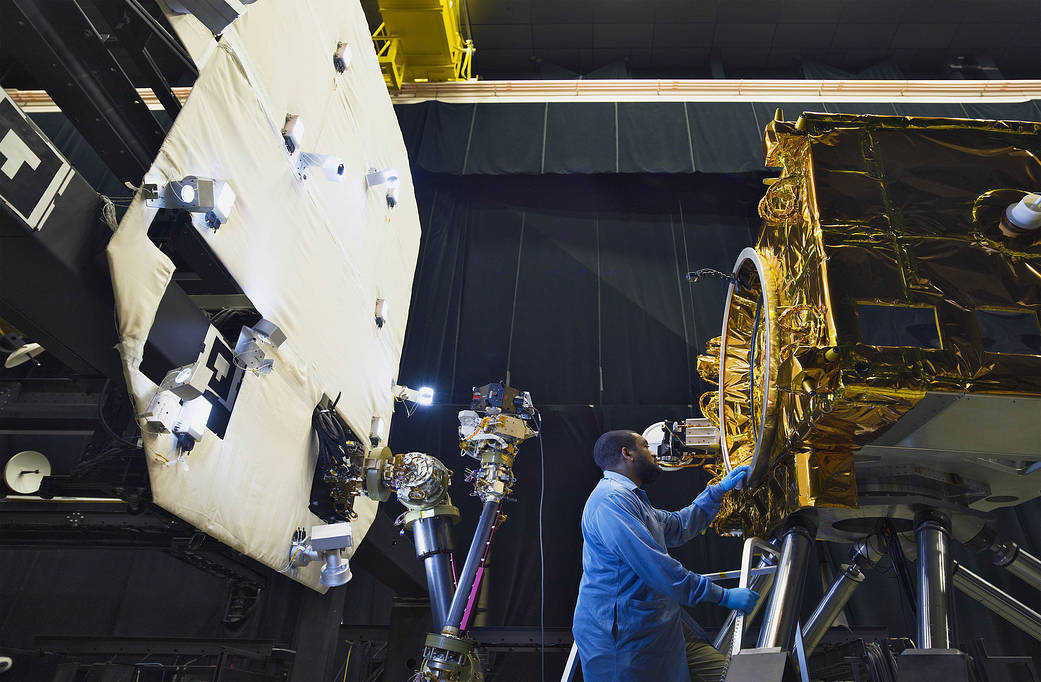
Satellites are crucial to our everyday lives, but cost hundreds of millions of dollars to manufacture and launch. Currently, they are simply decommissioned when they run out of fuel. However, there is a better way: satellite servicing, which can make spaceflight more sustainable, affordable and resilient. NASA’s satellite servicing technologies are opening up a new world where space robots diagnose, maintain and extend a spacecraft’s life.
At NASA’s Goddard Space Flight Center, a 10 by 16-foot robot tests satellite servicing capabilities on Earth before they’re put to use in space. Sitting on top of the six-legged hexapod is a partial mock-up of a satellite. Mounted to a panel close by is an advanced robotic arm. Together, these robots practice a calculated dance. As the hexapod moves, it mimics microgravity as the robotic arm reaches out to grab the satellite.
At NASA, we’re working to prove the combination of technologies necessary to robotically refuel a satellite in orbit that was not designed to be serviced. The same technologies developed for the Restore-L project will advance in-orbit repair, upgrade and assembly capabilities.
The ground demonstrations take place in Goddard’s Robotic Operations Center. The hexapod robot was built for NASA by Mikrolar, a New Hampshire-based company.
Image Credit: NASA Goddard/Chris Gunn

























